Chapter: Mechanical : Dynamics of Machines : Balancing
Balancing of a Single, Several and Reciprocating Rotating Mass
Balancing is the process of eliminating or at
least reducing the ground forces and/or moments. It is achieved by changing the
location of the mass centres of links. Balancing of rotating parts is a well
known problem. A rotating body with fixed rotation axis can be fully balanced
i.e. all the inertia forces and moments. For mechanism containing links
rotating about axis which are not fixed, force balancing is possible, moment
balancing by itself may be possible, but both not possible. We generally try to
do force balancing. A fully force balance is possible, but any action in force
balancing severe the moment balancing.
BALANCING OF A SINGLE ROTATING MASS
BY SINGLE MASS ROTATING IN THE SAME PLANE:

BALANCING OF A SINGLE ROTATING MASS
BY TWO MASSES ROTATING IN THE DIFFERENT PLANE:
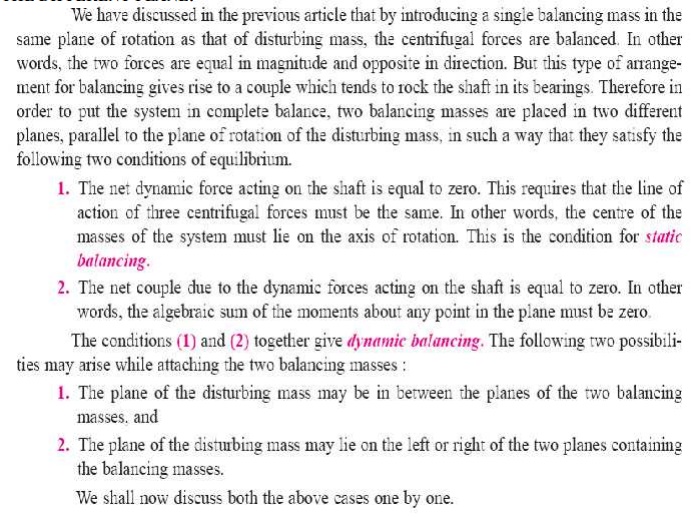
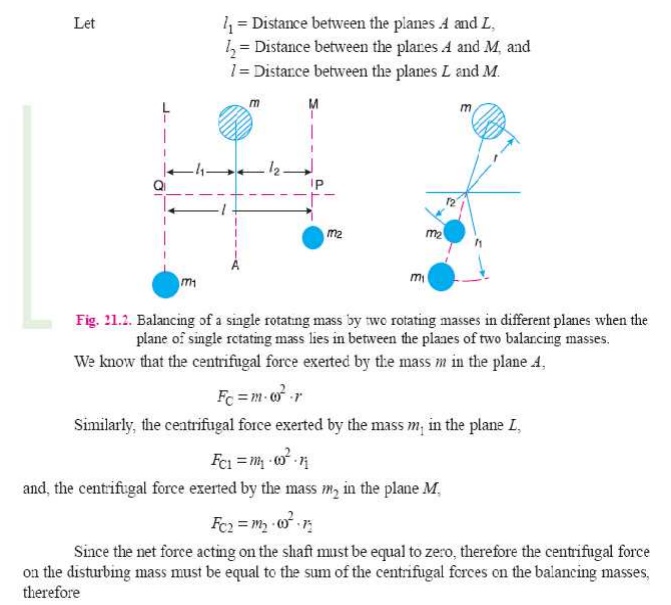
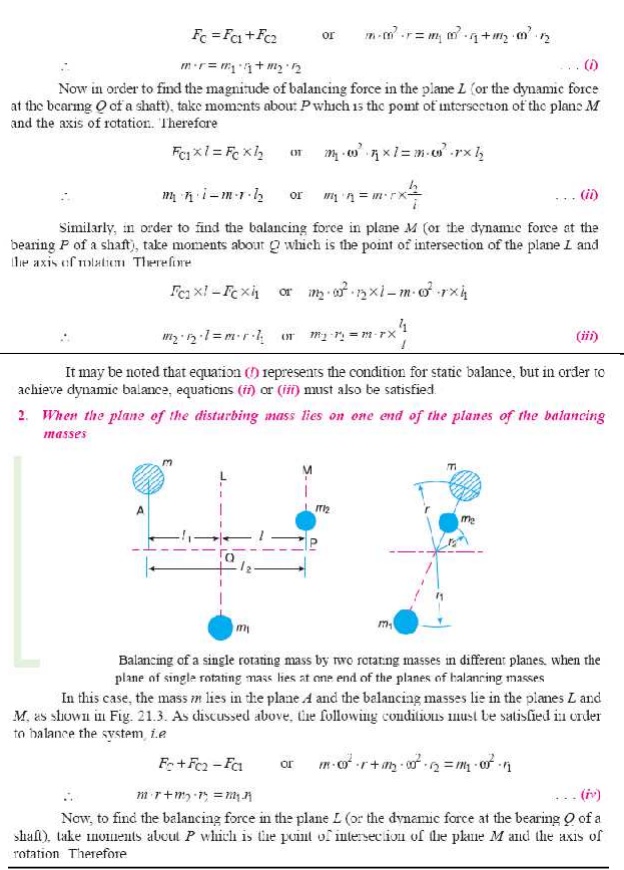
BALANCING OF A SEVERAL MASSES
ROTATING IN SAME PLANE:
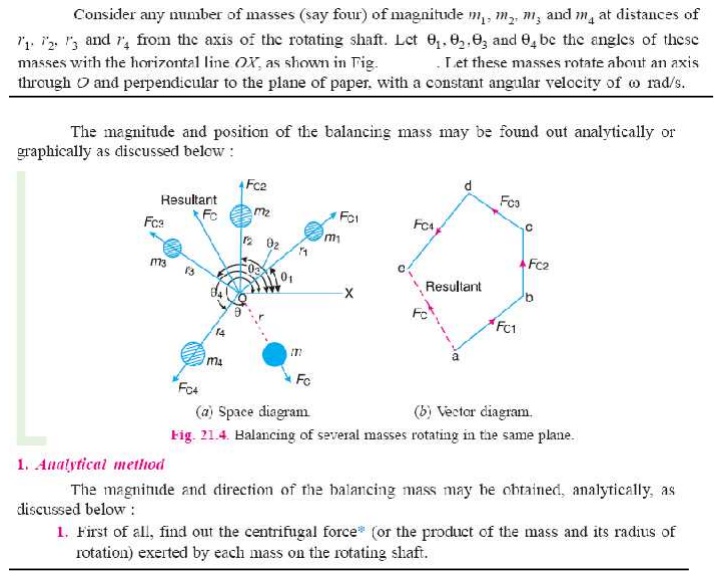

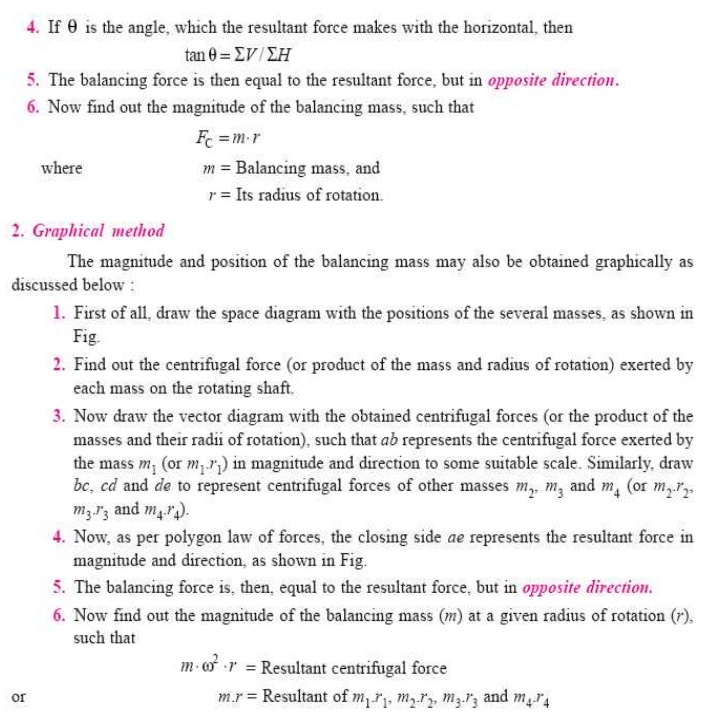
BALANCING OF SEVERAL MASSES ROTATING
DIFFERENT PLANE:

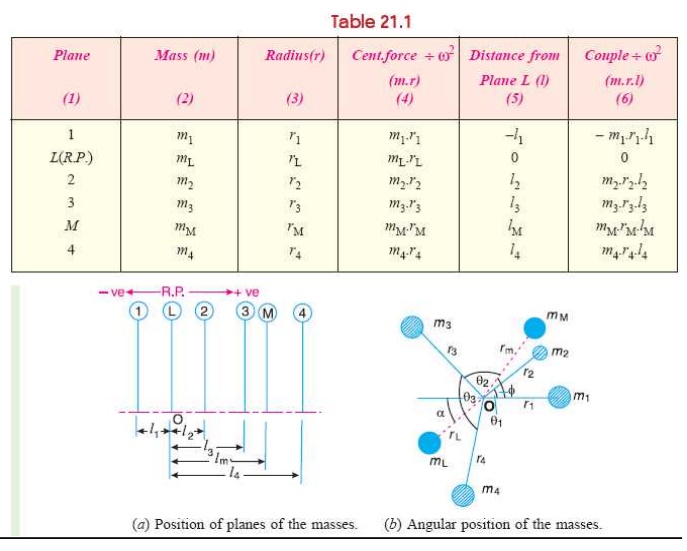
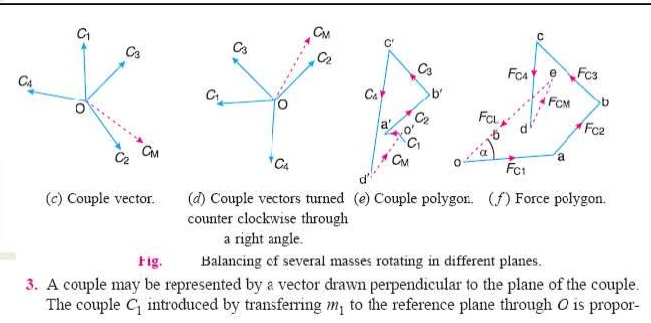
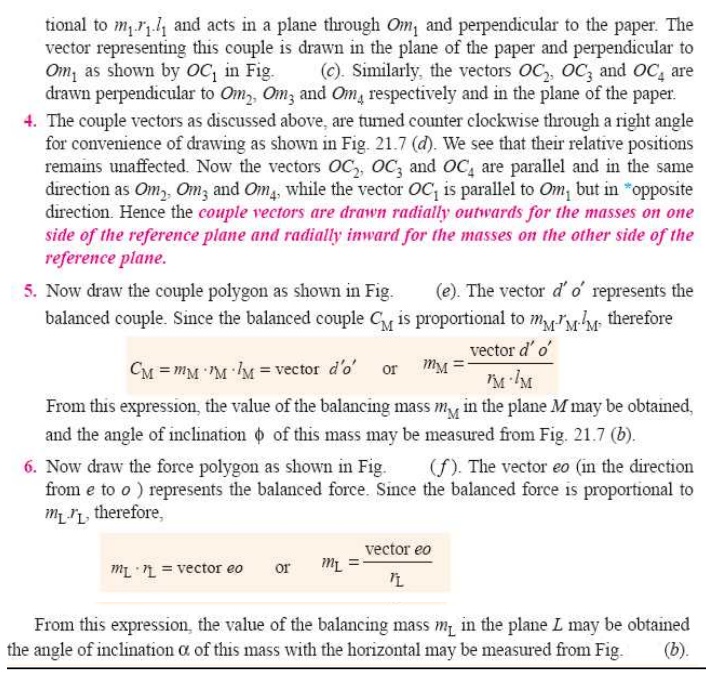
BALANCING OF RECIPROCATING MASSES:
Mass
balancing encompasses a wide array of measures employed to obtain partial or
complete compensation for the inertial forces and moments of inertia emanating
from the crankshaft assembly. All masses are externally balanced when no free
inertial forces or moments of inertia are transmitted through the block to the
outside. However, the remaining internal forces and moments subject the engine
mounts and block to various loads as well as deformities and vibratory
stresses. The basic loads imposed by gas-based and inertial forces
Primary and secondary unbalanced
forces of reciprocating parts:
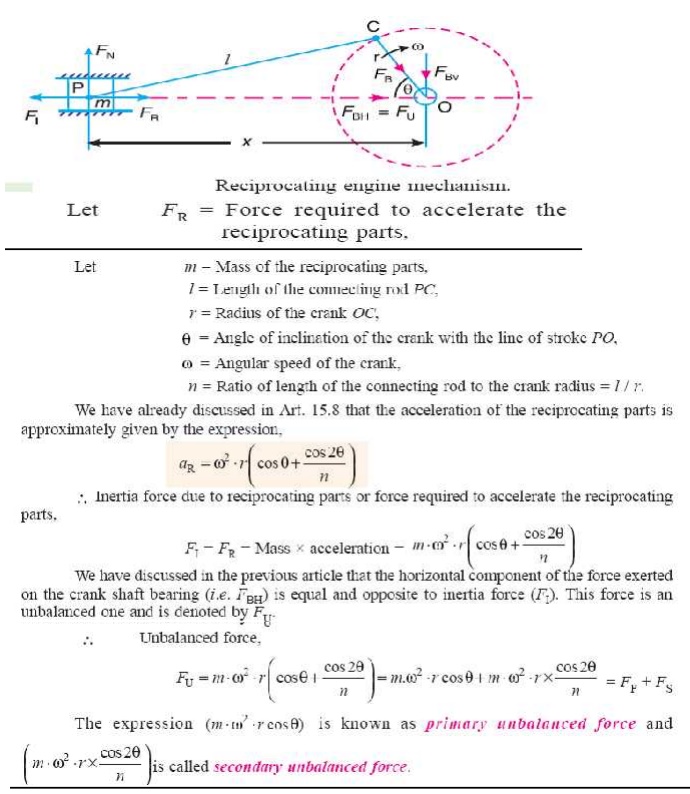
Related Topics